Peasant Woman Sitting on a Trunk
Executed in the 1910s. Provenance: Private collection, Europe. Literature: G. Tuluzakova, Nikolai Ivanovich Fechin , St Petersburg, Zolotoi Vek, 2007, p. 30, illustrated. G. Tuluzakova, Nikolai Fechin, The Art and the Life , San Cristobal, Fechin Art Reproductions, 2012, p. 222, illustrated. The famous Russian-American painter Nikolai Fechin is represented by a splendid canvas from his Russian period – Peasant Woman Sitting on a Trunk . The work was painted in the middle of the decade that began in 1910. Only a short time earlier, in 1909, the artist had graduated from the Imperial Academy of Arts (under the tutelage of Ilya Repin) and returned to his native Kazan, where he taught at the local Academy of Art. In the story of the master’s life as an artist, the Russian chapter – in terms of its creative inventiveness and the breakthroughs – is perhaps the most interesting. As the second decade of the 1900s began, Fechin was developing his unique manner of painting, at the basis of which lay the original principle – borrowed from Italian miniaturists – of a ground prepared with casein glue. When Fechin prepared a similar base, he achieved the startling effect of a matt glow to the surface of his canvases, where the casein ground absorbed the oils of the binding medium, leaving only the coloured pigments on the surface of the canvas. The combination of ochreous and silvery colours emitted a muted glow, spellbinding in its astonishingly harmonious chromatic spectrum. Peasant Woman Sitting on a Trunk should be seen not only as a magnificent example of Nikolai Fechin’s painting from his early “Kazan” period, but also as a reflection of the deep-rooted trends arising in Russian art in the decade beginning 1910. It is at this time that the quest for a national image or, in Gleb Pospelov’s words, “a certain indigenous aspect ... even “face” of Russia” becomes one of the key tendencies of Russian culture. The directions taken by the avant garde at the beginning of the 20th century, with its interest in archaic art, folklore and primitivism, were born out of attempts to reconnect with origins of humanity, to come to know the ancient conditions of mankind’s being and the basic principles of human existence. The desire to feel the genuine, elemental and spontaneous energy lying deep beneath the veneer of civilisation that represses the “natural human being”, and to dig down to the basic foundations of nation-building, lead to a heightened interest amongst artists in the life of the peasantry and lower urban strata. The “peasant women” of Philip Maliavin, Kuzma Petrov-Vodkin, Zinaida Serebriakova and Abram Arkhipov the “Raseya” of Boris Grogoriev, the genre historical paintings by Andrei Ryabushkin, the “merchants’ wives” of Boris Kustodiev – all of these are merely different facets of the same general movement towards a national “basic”, ranging from the idealistic to the grotesquely expressive. It is therefore no surprise that in his final years at the Imperial Academy of Arts, Fechin – whose attuned senses perceived the zeitgeist of the time – would choose common folk and traditional ways of life as subjects for his academic projects. One of his earliest experiments, Cheremiss Wedding , with its unbridled tumult of ancient ritual, would in 1908 win him the first prize at the Academy exhibition. The following year in 1909, working on his painting Cabbage Fest for the graduation competition, he would again address the theme of country festivities in portraying the communal process of pickling cabbage for the winter and masterfully render the vibrancy and colourful splendour of this farming ritual. Fechin’s life in the Bohemian society of St Petersburg and his academic training ensured that he would approach the rustic images he had known from childhood with a detachment and through the lens of the “new art”. Early in the decade that began in 1910, Fechin’s pictures of the life of common folk became increasingly popular not only
Peasant Woman Sitting on a Trunk
Executed in the 1910s. Provenance: Private collection, Europe. Literature: G. Tuluzakova, Nikolai Ivanovich Fechin , St Petersburg, Zolotoi Vek, 2007, p. 30, illustrated. G. Tuluzakova, Nikolai Fechin, The Art and the Life , San Cristobal, Fechin Art Reproductions, 2012, p. 222, illustrated. The famous Russian-American painter Nikolai Fechin is represented by a splendid canvas from his Russian period – Peasant Woman Sitting on a Trunk . The work was painted in the middle of the decade that began in 1910. Only a short time earlier, in 1909, the artist had graduated from the Imperial Academy of Arts (under the tutelage of Ilya Repin) and returned to his native Kazan, where he taught at the local Academy of Art. In the story of the master’s life as an artist, the Russian chapter – in terms of its creative inventiveness and the breakthroughs – is perhaps the most interesting. As the second decade of the 1900s began, Fechin was developing his unique manner of painting, at the basis of which lay the original principle – borrowed from Italian miniaturists – of a ground prepared with casein glue. When Fechin prepared a similar base, he achieved the startling effect of a matt glow to the surface of his canvases, where the casein ground absorbed the oils of the binding medium, leaving only the coloured pigments on the surface of the canvas. The combination of ochreous and silvery colours emitted a muted glow, spellbinding in its astonishingly harmonious chromatic spectrum. Peasant Woman Sitting on a Trunk should be seen not only as a magnificent example of Nikolai Fechin’s painting from his early “Kazan” period, but also as a reflection of the deep-rooted trends arising in Russian art in the decade beginning 1910. It is at this time that the quest for a national image or, in Gleb Pospelov’s words, “a certain indigenous aspect ... even “face” of Russia” becomes one of the key tendencies of Russian culture. The directions taken by the avant garde at the beginning of the 20th century, with its interest in archaic art, folklore and primitivism, were born out of attempts to reconnect with origins of humanity, to come to know the ancient conditions of mankind’s being and the basic principles of human existence. The desire to feel the genuine, elemental and spontaneous energy lying deep beneath the veneer of civilisation that represses the “natural human being”, and to dig down to the basic foundations of nation-building, lead to a heightened interest amongst artists in the life of the peasantry and lower urban strata. The “peasant women” of Philip Maliavin, Kuzma Petrov-Vodkin, Zinaida Serebriakova and Abram Arkhipov the “Raseya” of Boris Grogoriev, the genre historical paintings by Andrei Ryabushkin, the “merchants’ wives” of Boris Kustodiev – all of these are merely different facets of the same general movement towards a national “basic”, ranging from the idealistic to the grotesquely expressive. It is therefore no surprise that in his final years at the Imperial Academy of Arts, Fechin – whose attuned senses perceived the zeitgeist of the time – would choose common folk and traditional ways of life as subjects for his academic projects. One of his earliest experiments, Cheremiss Wedding , with its unbridled tumult of ancient ritual, would in 1908 win him the first prize at the Academy exhibition. The following year in 1909, working on his painting Cabbage Fest for the graduation competition, he would again address the theme of country festivities in portraying the communal process of pickling cabbage for the winter and masterfully render the vibrancy and colourful splendour of this farming ritual. Fechin’s life in the Bohemian society of St Petersburg and his academic training ensured that he would approach the rustic images he had known from childhood with a detachment and through the lens of the “new art”. Early in the decade that began in 1910, Fechin’s pictures of the life of common folk became increasingly popular not only



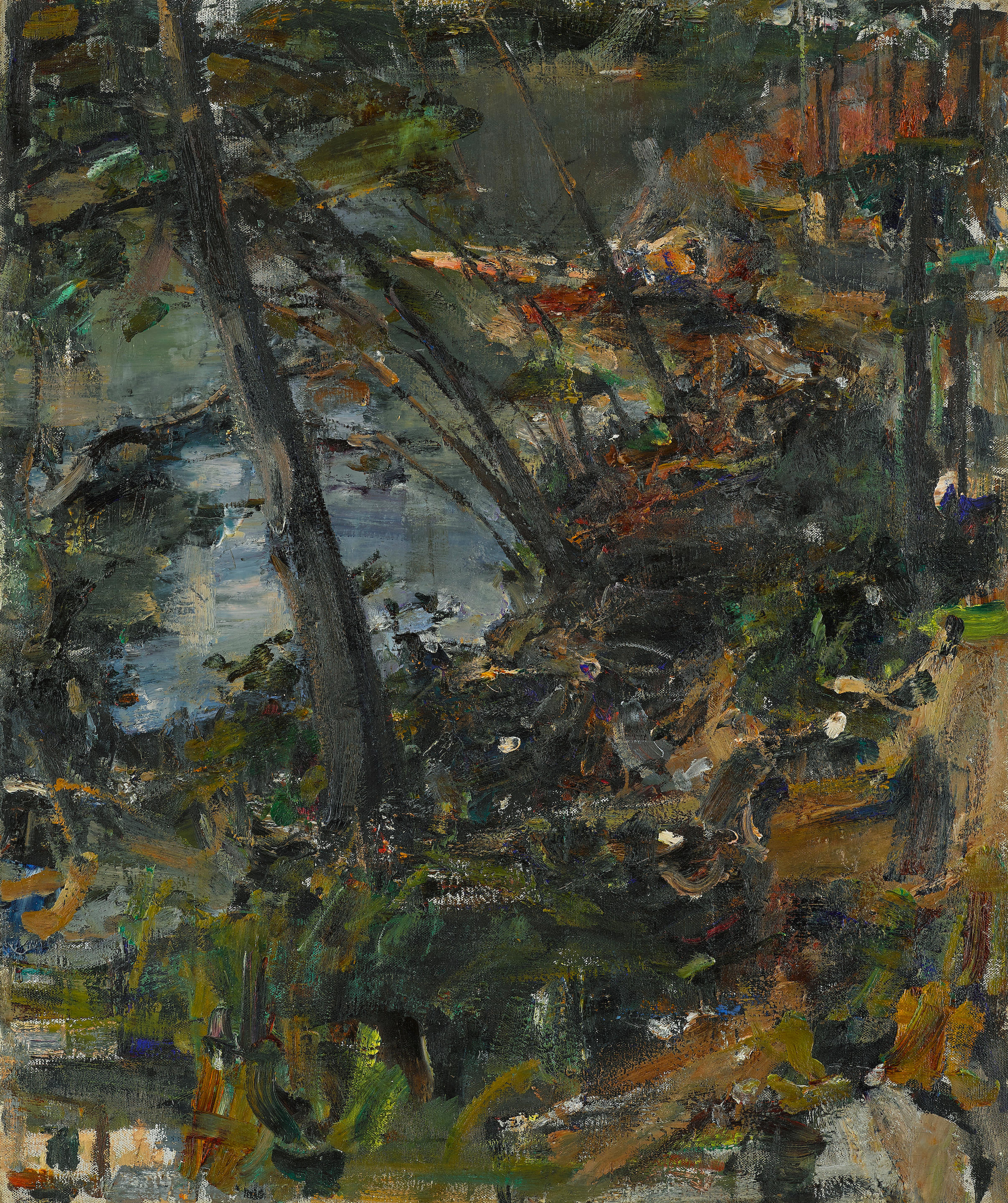

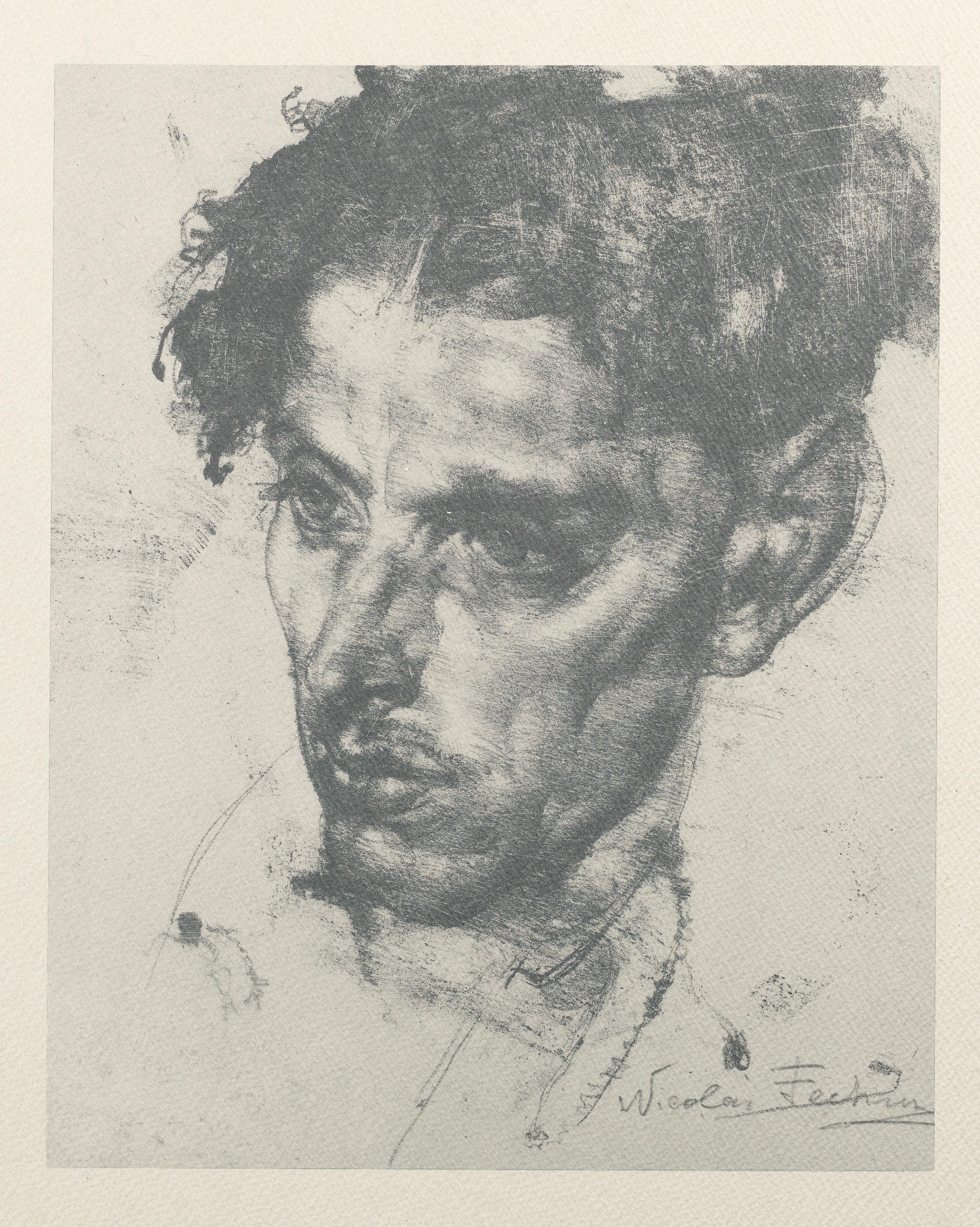


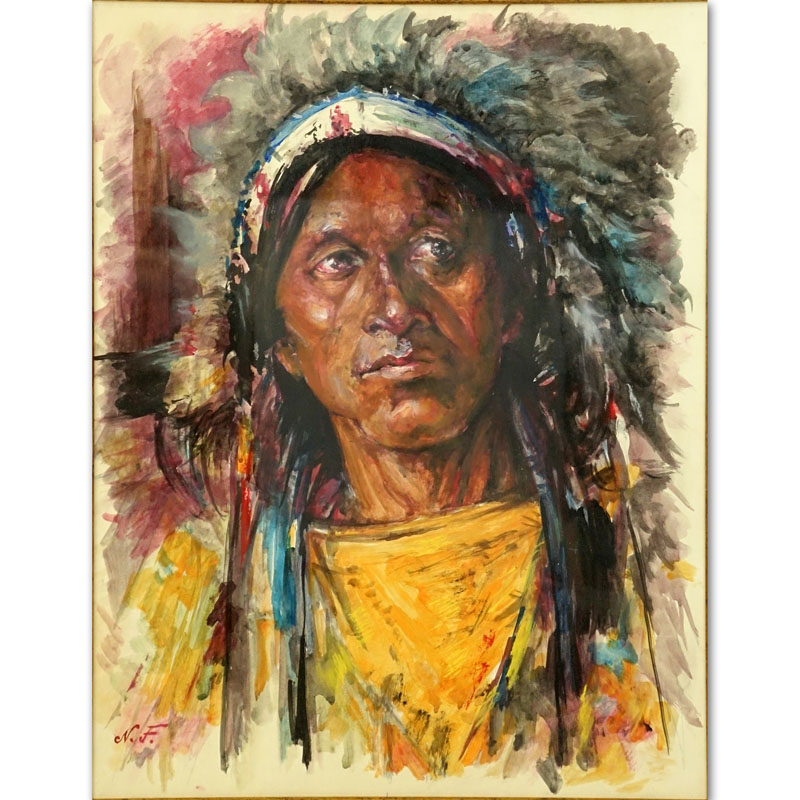
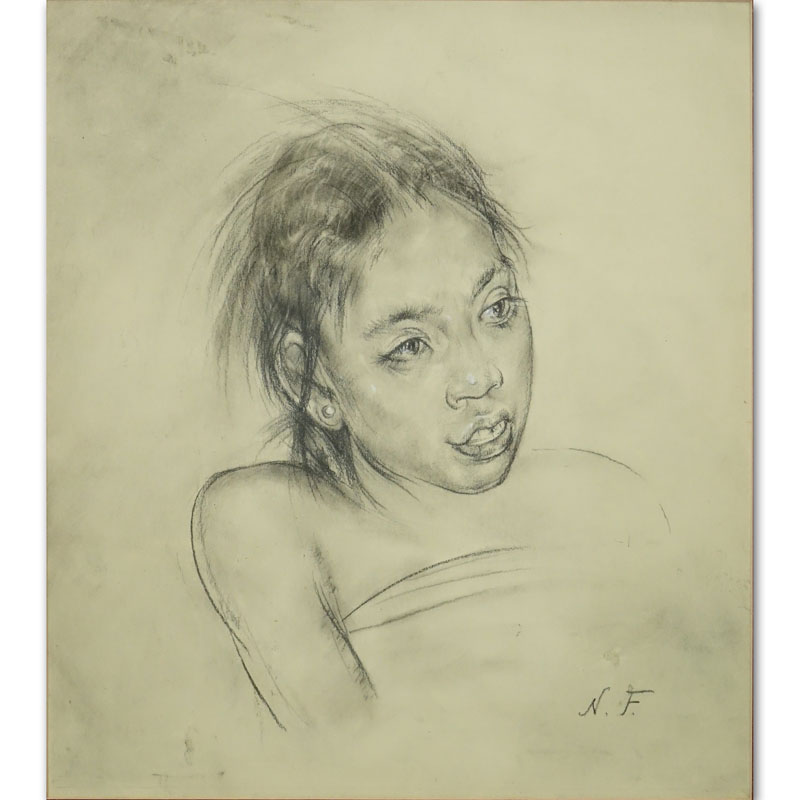
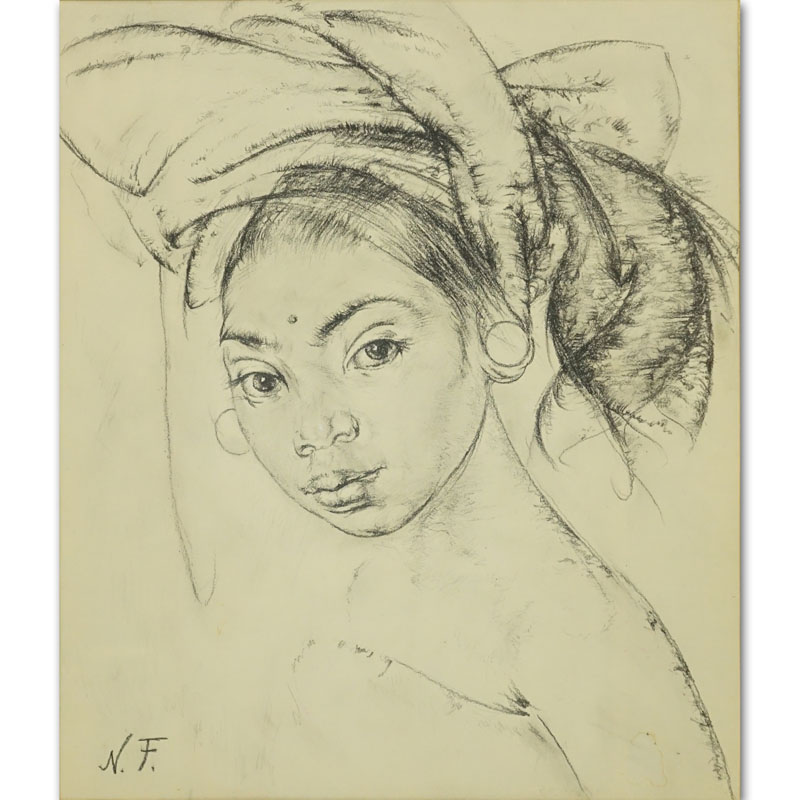
Try LotSearch and its premium features for 7 days - without any costs!
Be notified automatically about new items in upcoming auctions.
Create an alert